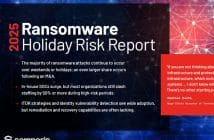
According to the recent National Scam Report, Australians lost AUD2.74 billion to scams in 2023 as identity shapes up as the new cybersecurity frontline.
The majority of losses (73.6%) were attributed to five scams: AUD1.3 billion from investment scams, AUD256 million from remote access scams, AUD201.1 million from romance scams, AUD137.4 million from phishing and AUD91.6 million from payment redirection frauds.
Although this marks a slight decrease from AUD3.1 billion the previous year, the number of reported scams has surged by 18.5%, with an estimated 30% of scams still going unreported.
These figures underscore the escalating challenges in fraud prevention, exacerbated by recent breaches like the MediSecure incident, where sensitive customer information was compromised due to cyber attacks.
“In the digital age, our identities are our most valuable assets, yet they are increasingly targeted by sophisticated fraud tactics,” states Transmit Security Vice President Richard Metcalfe. “Embracing integrated solutions that detect, anticipate, and neutralise fraud at its inception is essential.”
Analysts say a fragile identity infrastructure is often the result of incomplete, misconfigured, or vulnerable elements within the identity fabric. These weak points can allow cybercriminals to penetrate sensitive systems, executing attacks ranging from data theft to ransomware.
“The strategic position of CIAM in the enterprise security stack makes it a prime target,” said Metcalfe. “Recent breaches at large identity management firms underscore their importance. This trend marks a significant shift in the threat landscape, emphasising the critical need for resilient identity infrastructures.”
“Digital identity has become an integral component of our business infrastructure, and when compromised, it puts everything from business continuity to brand reputation at significant risk.”
The traditional separation between identity management and fraud prevention has proven inadequate against the sophisticated landscape of cyber threats. Identity is the frontline of cyber defence. Customer Identity and Access Management (CIAM) elements, people, processes, and technology serve a critical role in safeguarding digital lives.
“CIAM systems, when they fail, create catastrophic ripple effects impacting everything from productivity to personal safety in critical sectors like healthcare and utilities,” explains Metcalfe. “As digital identities and CIAM infrastructures become prime targets, their security cannot just enhance efficiency and user experience but must actively defend against cyber threats.”
Legacy CIAM systems, designed primarily for productivity, now face challenges related to modern cyber threats. These systems must evolve from merely facilitating access to becoming robust defenders against adversarial attacks. This evolution requires a shift in focus towards comprehensive security that includes adversarial thinking and resilience against sophisticated cyber threats.
“CIAM must transition from an efficiency-driven model to one that prioritises security. This shift is essential to protect digital identities and maintain the integrity of our digital ecosystems,” said Metcalfe.
“Moving forward, CIAM solutions need to integrate advanced threat detection and response capabilities, enabling them to identify and mitigate threats in real time. This approach ensures that CIAM systems are not just gatekeepers, but active defenders against cyber threats.”
Converging identity management and fraud prevention into a single, orchestrated platform is no longer optional, it is a necessity. This integration enhances user experience while providing a holistic view of security, enabling enterprises to detect and mitigate fraud more effectively.
“By consolidating CIAM and fraud prevention, we not only eliminate security gaps but also streamline operations, significantly reducing costs and enhancing compliance with regulatory standards like the Scam Safe Accord,” said Metcalfe. “This strategic consolidation is vital for protecting digital assets while maintaining operational efficiency and customer trust. Our collective mission must be to redefine fraud management, combining customer identity management, verification, and fraud prevention into a unified strategy. This not only protects digital assets but also strengthens customer trust.”
Metcalfe says embracing a unified, AI-driven approach to identity and fraud management is crucial for securing our digital futures. The integration of advanced threat detection and response capabilities ensures that CIAM systems are not merely gatekeepers but active defenders against cyber threats, pivotal in the ongoing fight against fraud.





